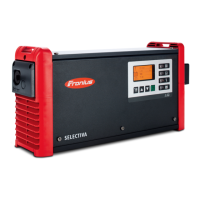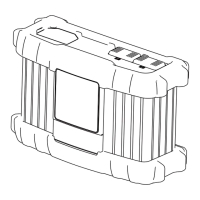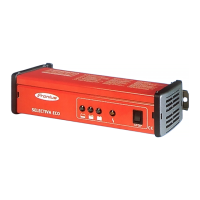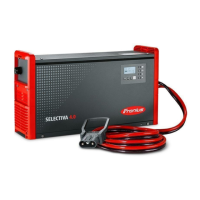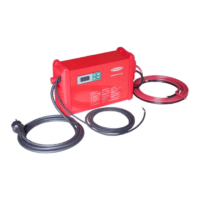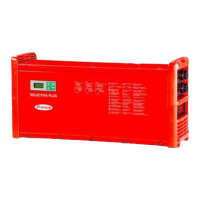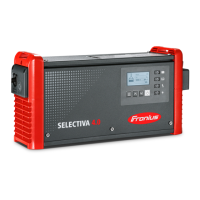1 Measuring device
2 Battery charging system
9 Measuring line
Example: measuring the insulation resistance
WARNING!
An electric shock can be fatal! Capacitors can charge during the insulation resist-
ance measurement.
After carrying out the insulation resistance measurement, check that all tested potentials
are de-energised before continuing with the safety inspection. Alternatively, the capacit-
ors can be discharged by short-circuiting the tested potentials or via the discharge func-
tion on the insulation tester.
Capacitor discharge time2 min.
Ground con-
ductor current
Preparations
- Only perform the measurement if the insulation resistance test produced an accept-
able result
- Direct method: The device must be isolated from earth. No other connections to the
earth potential are permitted (e.g. data lines, fitting, etc.)
- Connect the mains cable
- Re-connect the DC cables to the battery - Note: battery voltage, take safety precau-
tions
Once the battery charging system has been connected, switch it back on. The battery
charging system must be in charge mode when measuring the ground conductor current,
as otherwise the measurement result will be unreliable.
Only the leakage currents that occur at grid frequency may be included (50 - 60 Hz func-
tion of ammeter). High-frequency leakage currents distort the measurement results *).
*) These requirements comply with DIN VDE 0701-0702 and ÖVE/ÖNORM E8701‑1.
Also refer to the applicable requirements and standards in your country.
There are two methods that may be used to measure the ground conductor current:
- Direct method: Device must be completely isolated and must not exhibit any links to
another earth potential
- Differential method:
The measurement can be taken on the battery charging system (via an adapter lead) or
in the distributor. If taking the measurement in the distributor, ensure that there are no
50

